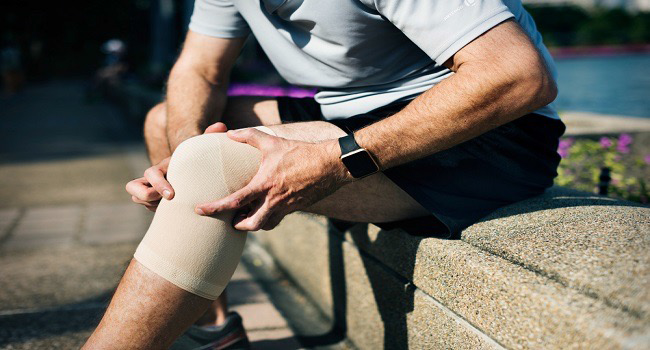
Can a simple home-based exercise program be an effective and low-cost option to help elderly patients with knee osteoarthritis? A clinical trial investigates.
What is Osteoarthritis
Knee osteoarthritis (OA), also known as the degenerative joint disease of the knee, is typically the result of wear and tear and progressive loss of articular cartilage.
It is a common condition that affects the knee joints, causing pain, stiffness, and swelling. It can be divided into two types:
Primary osteoarthritis is articular degeneration without any apparent cause while secondary osteoarthritis can result from trauma or the presence of abnormal cartilage in the joint in diseases such as rheumatoid arthritis.
How does it affect the patient?
It is typically seen in elderly patients and can limit their ability to perform daily activities. It is a progressive disease with a gradual increase in the intensity of the symptoms which include:
- Pain that increases with physical activity
- Joint swelling
- Joint warmth
- Early morning stiffness
- Decrease in the range of motion of the affected joint
Available Treatments
There are many treatments available for osteoarthritis such as:
- Anti-inflammatory medication (NSAIDs)
- Steroids
- Immunosuppressant drugs
- Joint injections
- Surgery which includes joint replacement
While these treatments have shown good efficacy over the years, they can be costly and have potential side effects. Also, these pharmacologic treatments do not have the desired results when used alone without exercise regimens.
Many different regimens are in current use and there is a need to identify the best ones according to the patient demographics.
Clinical Trial
A recent
study published in BMC Musculoskeletal Disorders investigated the effects of a home-based exercise intervention on elderly patients with knee osteoarthritis. The study aimed to determine whether a simple exercise program could improve the patient's pain, physical function, and quality of life.
The study involved 171 participants all over the age of 60, who were diagnosed with knee osteoarthritis. The participants were divided into two groups - an intervention group and a control group. The intervention group participated in a twelve-week home-based exercise program, while the control group was only given health education without any guidance on home-based exercises.
The home-based exercise program involved a combination of exercises designed to improve strength, flexibility, and balance. The exercises included:
- Isometric contraction of the quadriceps
- Supine and prone leg-lifts
- Passive knee flexion and extension
- Resistance knee flexion and extension
- Shifting of the center of gravity
After twelve weeks, the researchers found that the participants in the intervention group had significant improvements in pain, physical function, and quality of life, compared to the control group. Specifically, the intervention group had a 41% reduction in pain, a 28% improvement in physical function, and a 23% improvement in quality of life.
Conclusion
These findings suggest that in addition to the pharmacologic treatments, a simple home-based exercise program can be an effective and low-cost option for elderly patients with knee osteoarthritis.
These exercises can easily be performed at home with specialized equipment or expert supervision and can help patients improve their quality of life immensely.
__________

